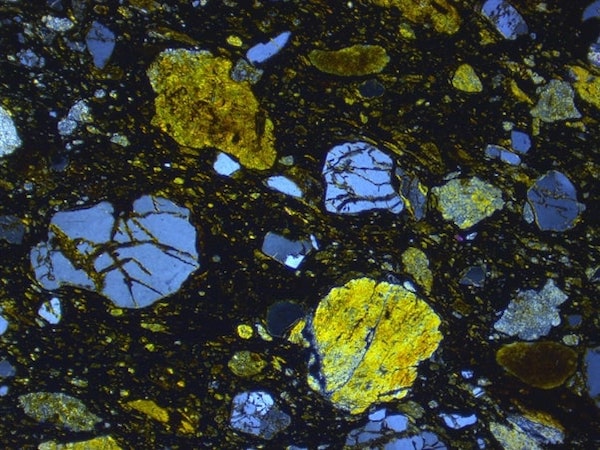While exploring volcanic rocks on Scotland’s Isle of Skye, geologists made a discovery literally out of this world — mineral forms that have only ever been found in space. The minerals were thrown out from a 60 million-year-old meteorite impact, previously unknown to scientists.
This makes it the first known meteorite impact designated within the British Paleogene Igneous Province (BPIP). The discovery leaves more questions than answers, like is there any connection to the impact of the meteorite and the Paleogene volcanic activity across the North Atlantic?
These minerals have never been reported on Earth before the discovery; however, they are known to scientists after being collected by NASA’s Stardust Comet Sample Return Mission as space dust in the trail of the Wild 2 comet.
Lead author Simon Drake, from Birkbeck University of London, was investigating a meter-thick layer at the base of a 60-million-year-old lava flow. Drake explained in a statement:
“We thought it was an ignimbrite (a volcanic flow deposit).”
However, while using an electron microprobe to analyze the rock, it was soon discovered that it contained the rare minerals vanadium-rich and niobium-rich osbornite. Moreover, the osbornite is unmelted — this suggests that it is part of the original meteorite.

Recessed meteoritic ejecta layer site 1.1-m-thick deposit beneath a thick sequence of basaltic lava flows. (Image: Simon Drake)
The team also discovered reidite, which is an extremely high-pressure form of zircon, and only ever associated in nature with impacts. Native iron and other exotic mineralogy linked to impacts, such as barringerite, were also found. The lead co-author of the study, Dr. Andrew Beard of the Earth and Planetary Sciences Department at Birkbeck, University of London, told Metro:
“When we discovered what it was, we were very surprised, and it was a bit of a shock because we were not expecting that.
“We initially considered it to be volcanic rock, so it was a bit of a shock when we realized what we had found.”
Meteorite strike over 60 million years ago
At a second site just seven kilometers away, a 2-meter-thick layer of material expelled from a crater was found to have the same unusual mineralogy. Drake and his team were able to estimate the impact of the meteorite to be between 60 million and 61.4 million years ago.

Thin section view of meteoritic ejecta deposit site 1. Note fractured quartz and pervasive fabric. Field of view 4 mm XPolars. (Image: Simon Drake)
The Isle of Skye is well-trafficked by geologists, leaving Drake astonished that the site has remained undiscovered for so long. Drake said that the second site had not been sampled in years, and the first site was a challenge, with steep, rough, and very boggy terrain that most probably discouraged previous workers from sampling the layer, Drake recalls:
“We were sinking in up to our thighs. I distinctly recall saying to Andy Beard: ‘This had better be worth it.’
“It was worth it.”
This discovery leaves more questions than answers — are there more sites that have extraterrestrial minerals? Where did the meteorite hit? Did the impact trigger the outpouring of lava that began at the same time? The team published their discovery in Geology.
Follow us on Twitter or Facebook


